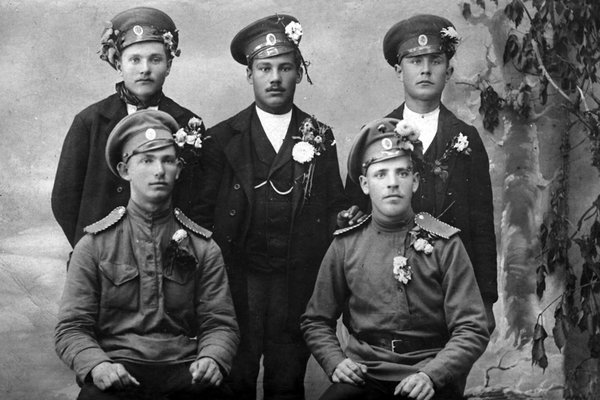
The Estonian War Museum’s 8th Annual Baltic Military History Conference “National Formations in the Great War: from an Imperial Mobilisation Policy to Armies of Independent Nation States
Great nations and empires have formed military units based on ethnic groups or tribes since Antiquity. There are national formations in some armies even today. Before the Great War, most of continental Europe had established universal conscription as a basis of mass armies relying on a vast pool of trained reserves. The Russian Empire sought unity in its recruitment and formation systems. However, the German Kaiserreich and the Austro-Hungarian Dual Monarchy were different from Russia in terms of their constitutional origins as unions of separate states. Therefore, as commanders-in-chief, the Hohenzollerns and the Hapsburgs presided over several nominally independent armies that were to a varying degree integrated into imperial armed forces. When the empires entered the Great War, Royal Prussian, Bavarian, Saxon and Württembergian troops as well as Imperial Austrian and Royal Hungarian units had often retained their own commanders, uniforms and tactical peculiarities. Sometimes they even took their oath to their King, not the Kaiser. Empires with overseas possessions also formed units based on an ethnicity or nationality. The reasons were somewhat different from continental states. In some cases, officers from the imperial homeland led local recruits in Asian, African and American colonies and protectorates. In other cases, local men fought under the command of local chiefs and warlords, maintaining their own traditions, tactics, and sometimes even pursuing their own goals. Because of the climate and tropical diseases, for which there was no cure until the 19th century, it was difficult to deploy European soldiers in many colonies. But in the Great War, military migration took another direction, as large numbers of colonial and dominion soldiers from Australia and New Zealand to Algeria and Senegal were brought to the fronts of Europe.
The Estonian War Museum’s annual conference for 2017, marking the 100th anniversary of the establishment of Estonian national units within the Russian imperial army, will aim at a comparative study of national formations in the Great War. It will analyse the political and military goals of the empires in recruiting and forming national units. To what extent were national formations tools for imperial war propaganda and mobilization, to what extent were they supposed to rouse national separatism against those empires? How important was the initiative by national leaders themselves? Obviously, internationalist agitation by the Bolsheviks, which competed with nationalist agitation, cannot be discounted as well. When empires collapsed, a number of those national units became the germ for armies of new states, which fought in independence or freedom wars; but there were national formations on the other side, in the Red Army, too. What was the effect of national units in the long term? Clearly, there were attempts to revive the policy in the Second World War. In terms of tradition, many Eastern and Central European armed forces still draw their history and origins from the battlefields of the First World War and the continuation wars.
Speakers and their topics
Chosen works can be found in the Estonian War Museums’s yearbook (linked).
- Dr Serhiy Choliy (National Technical University of Ukraine, Kyiv) – “The Local Military Privileges of Late Habsburg Monarchy (1867–1918): Dichotomy of regional traditions and state centralism”
- Gavin Wiens (University of Toronto) – “Fighting in the Shadow of the Eagle and Lion: Saxons and Württembergers in the German Army, 1914–1918”
- Dr Eyal Pascovich (University of Haifa, Israel) – “The Jewish Legion in the British Army during the First World War”
- Michał Przybylak (War Studies University, Warsaw) – “From Childhood of the Riflemen’s Association through middle-age of the Polish Legions to adulthood in the Polish Army. History of the rebuilt Polish Army, 1914–1920”
- Dr Ciro Paoletti and Loredana Vannacci (Italian Commission of Military History) – “The Czech Army Corps in the Italian Royal Army in 1918”
- Dr Daniel Marcelino Rodrigues (IE University, Spain) – “The Armée d’Afrique between Myth and Reality: Fighting for France, fighting the World Wars”
- Valdis Kuzmins (National Defence Academy of Latvia) – “Latvian Rifle Regiments and their Impact on Latvian Military Culture”
- Prof dr Maciej Górny (Tadeusz Manteuffel Institute of History, Polish Academy of Science) – “Turning Points: Kostiuchnówa, Zborov and the Decline of Imperial Loyalty”
- Tobias J. Burgers (Free University of Berlin) – “Japan, the Great War, and how its mobilization for WWI eventually mobilized it for WWII”
- Dr Vilma Bukaitė (Lithuanian National Museum) – “Changing Our Army: Political Self-Identification in Diaries and Letters of Lithuanian Authors in 1915–1919”
- Dr Tomas Balkelis (Lithuanian Historical Institute) Political Radicalism among Lithuanian Soldiers and Officers in the Russian Army, 1917–1918″
- Prof dr Jonas Vaičenonis (Vytautas Magnus University) – “The Development Challenges of the Lithuanian Armed Forces from November 1918 to May 1919”
- Dr Blaž Torkar (Military Schools Centre/Military Museum of the Slovenian Armed Forces) – “The Army of the State of Slovenes, Croats and Serbs”
- Dr Ruslana Martseniuk (Taras Shevchenko National University of Kyiv) – “The Legion of Ukrainian Sich Riflemen in 1914–1918”
- Dr Andrii Rukkas (Taras Shevchenko National University of Kyiv) – “The Creation of Ukrainian National Military Units within the Russian Army in 1917”
- LTC Agur Benno (Estonian Embassy in Moscow) – “The Development of the Insignia of the Estonian National Units in Comparison with Similar Formations”
- LTC Vitali Lokk (Estonian Defence Forces) – “The Formation, Activities and the Importance of the Supreme Committee of the Estonian Soldiers in the Formation of National Units in 1917–1918”
- Dr Liisi Esse (Stanford University Libraries) – “The Forgotten Soldiers? The Fate of the Estonian WWI Veterans during the Interwar Period”

